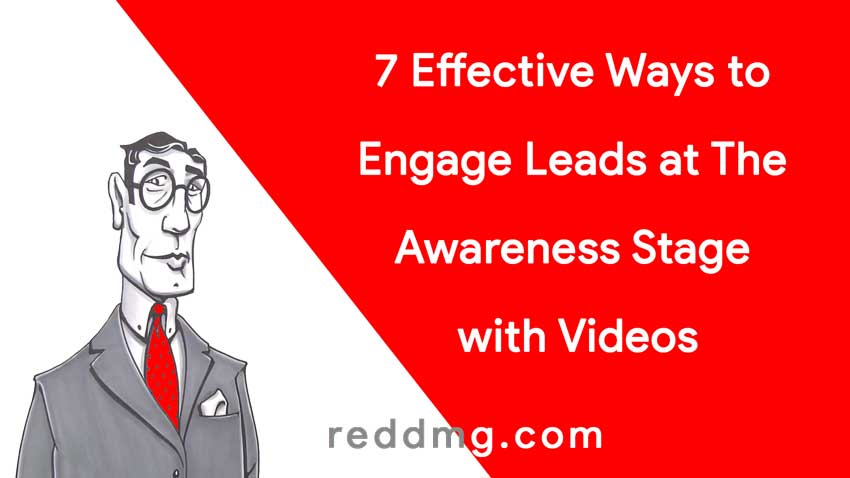Here’s a little secret:
Videos are powerful tools for attracting and nurturing leads. The right video content produces one of the best ROI (return on investment).
According to the Aberdeen Video Marketing Growth Report, businesses that use videos generate 66% more qualified leads per year. And 81% of businesses now use video content for lead generation.
Videos engage more than any other type of content you can imagine. 54% of consumers want to see more videos from brands, based on a survey report.
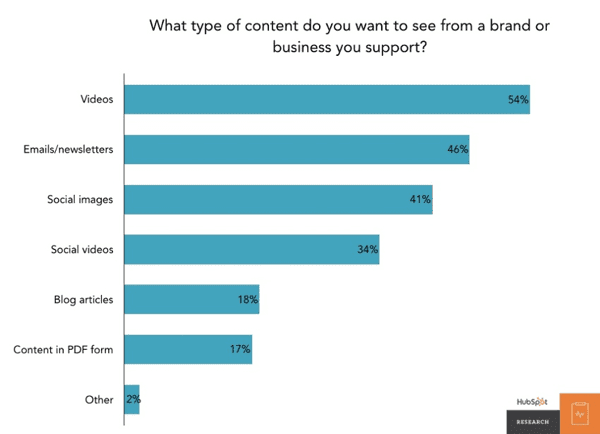
If you’re not considering video as awareness stage content, it’s time to rethink your strategy. Videos can work great to captivate a broad audience and motivate them to learn more about your brand — by subtly highlighting their problems and speaking to their values.
Your marketing funnel desperately needs videos —, especially at the very top.
Maybe you’ve been creating videos by the side and don’t measure the impact, it’s time to do better. Developing an effective video strategy requires consistency and a clear goal. This is the only way to realize ROI over time.
What’s The Awareness Stage?
To understand the awareness stage better, you’ve got to understand that a prospect goes through 3 distinct stages before purchasing a product or service.
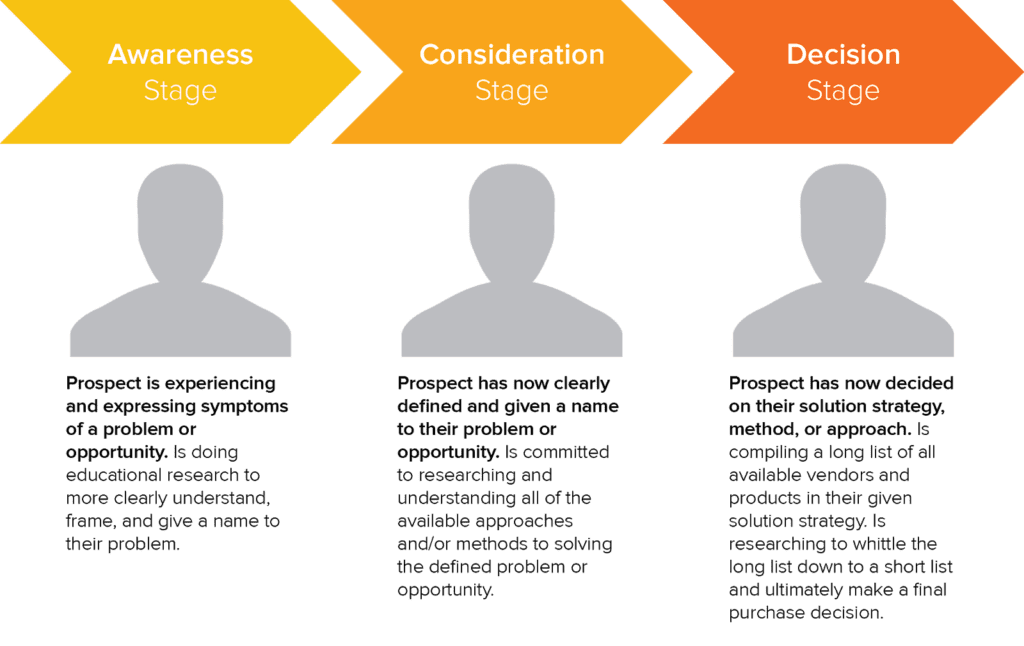
These stages are:
- The Awareness stage
- The Consideration stage
- The Decision stage
In simple terms, a potential customer must recognize their need or challenge (awareness), they will consider all the options that will meet their needs, and finally, after considering all the available products, they’ll decide on the right product to purchase.
We’re focusing on the awareness stage of the customer journey. Because getting the customer to being the journey is often more difficult than you think. But I’ve simplified their entire process.
So what exactly is the Awareness stage?
“The Awareness stage is the topmost stage of the marketing funnel. It’s the first stage where potential customers become aware of your brand, and consequently, understand their challenges and needs better.”
Here’s a typical marketing funnel.
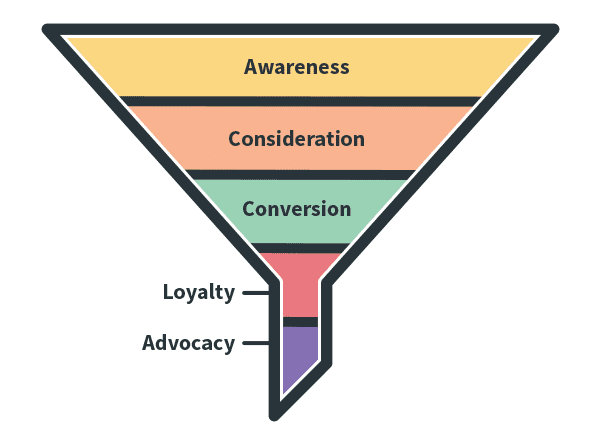
Through different marketing channels, people get to know what your business is about, the solutions you offer, and what makes you stand out from the competition.
Whether you’re a B2B or B2C brand, you can create insightful videos and then amplify them using Facebook, Instagram, sponsored posts, native ads, PPC ads, guest posts, and of course, share on YouTube platform.
By creating ‘awareness-specific’ marketing campaigns and distributing them around the web, you make it possible for the target audience to enter your funnel and start a purchase journey.
To maximize your videos at the top of the funnel, you first need to develop a strategy.
Let me show you how to do it…
Developing a Video Marketing Strategy
Videos are dominating the web right now. Both small and big brands are capitalizing on the power of videos to drive traffic and customers.
Videos currently drive 73% of all internet traffic and it’s projected to drive 82% of all consumer Internet traffic by the end of 2020, according to Cisco’s report.
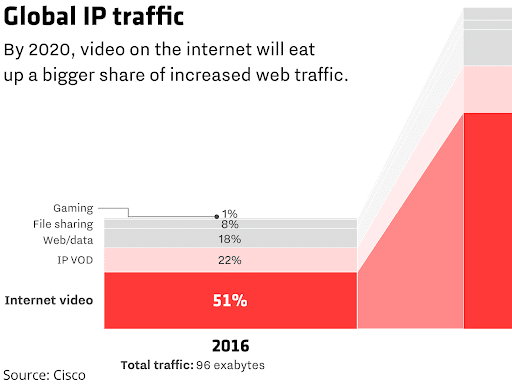
This is good news. Unfortunately, you need a video marketing strategy to get a piece of this huge traffic. Especially when you’re looking to engage leads at the top of the funnel (ToFU)
Follow these simple steps to nail a winning video strategy:
1). Understand the problem your audience wants to solve
When you know the problem your target audience is going through, then you’ll be able to provide the right information. At the Awareness Stage, potential buyers are mostly looking for a ‘hint’ to help them understand their problems better.
Because most of these people may not even be aware of what they’re going through.
For example, an eCommerce company may be wondering why they’re not getting online sales as they should, but little did they know that their website design is the problem.
So, it’s your responsibility to help people understand ‘exactly’ what their needs are.
It’s not time to recommend your product. If you do, you might push potential buyers away. Because the majority of them aren’t ready to purchase yet. A product-focused video will not work at this stage, so focus on educational video instead.
2). Create the right type of video
Another integral part of a video strategy is the type of video you create. Since buyers will be looking for helpful (mostly beginner-level) information at this awareness, wrap your video around testimonials.
You’re not doing this to get them to buy yet, but to prove to them that your brand has helped some other customers with similar needs as theirs. It could even be an interview your business conducted with a new customer.
You may not measure the impact of these types of content, but they’ll help build trust and confidence in the minds of potential customers.
3). Choose your video distribution channels carefully
After creating your videos, it’s as good as a written blog post until you distribute them. There are so many channels you can leverage. But make sure you’re reaching your ideal customers there.
Instagram may be a great place to share videos, but if your target audience isn’t hanging out there, why would you share your videos there? It doesn’t make sense.
But regardless of your industry or business model, you’ll likely find your prospects on YouTube and Facebook. So get started on these platforms first, you can scale later to other platforms. YouTube is currently dominating the other video distribution channels, so start a channel.
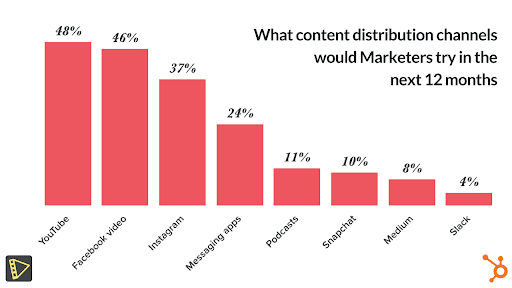
Both YouTube and Facebook will help you to reach potential customers and gather valuable engagement data. This will come in handy when you’re creating new videos for the Consideration and Decision stages of the marketing funnel.
4). Create high-quality and engaging videos
Don’t approach video content with a half-baked approach.
You have to go all in. The picture quality, the audio, the settings, everything must be up to standard.
If you’re working on a tight budget, you can always start small but aim for the best quality from the get-go. Creating a pixelated video is going to demean your brand in the viewers’ eyes.
Eliminate every form of background noise in your video. Nobody wants to watch a video that echoes ‘mediocrity’ — especially when you’re trying to communicate an important brand message.
5). Align your video content to suit your audience where they are
Not all video channels are created equal!
There’s a culture on social media platforms. Facebook, for example, may accommodate all types of videos, including branded videos, but a lifestyle video will perform better on Instagram and Snapchat.

Adapting your videos to different channels can help you reach more people, regardless of whether they are.
Mobile channels are also important. Make sure your videos are mobile responsive so that it can play well on any mobile device (Smartphones, Tablets, etc.).
Your video strategy is ready. Now, let’s see the 7 types of videos you should create to engage leads at the top of your marketing funnel:
1. Explainer Videos
Explainer videos have become popular in the online marketing environment. Interesting explainer videos can transform your business and create massive awareness.
Consumers love it, that’s why 77% of viewers watch an explainer video for up to 2 minutes.
If you’re targeting the younger generation in your business, this type of video also appeals to millennials. 7 out of 10 millennials will watch a company’s video when buying products online.
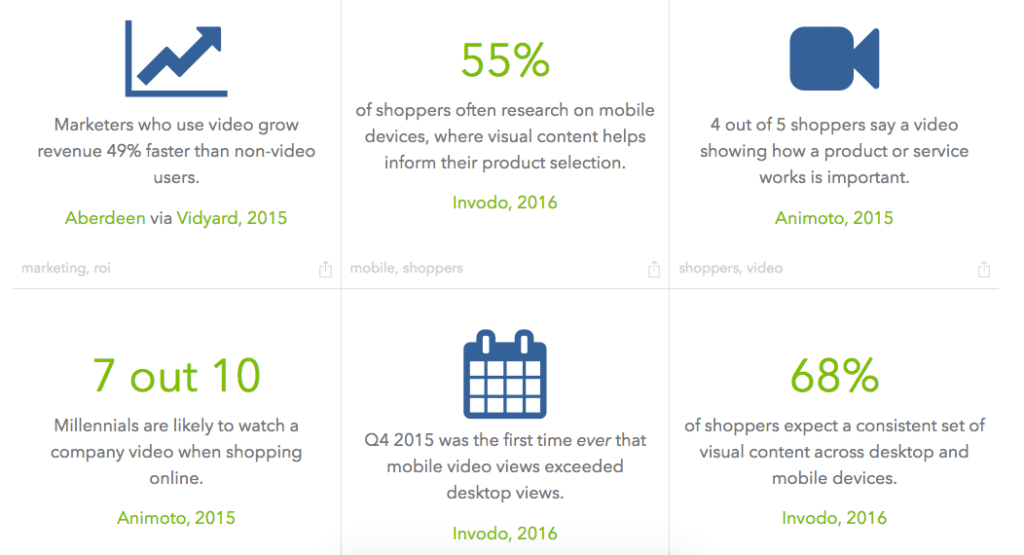
Sometimes, all you need to grab someone’s attention and convey your message in a way that they’ll relate to is a quick and easy explainer video.
Since the Awareness stage of the customer journey is all about introducing your business to a broad audience, rather than simply talking about your brand’s awesomeness, just “explain it” in less than 3 seconds.
Remember to focus on the audience’s pain point. It’s the hallmark of high-converting explainer videos.
Apart from creating massive awareness for your business, explainer videos can drive revenue growth.
Crazy Egg generated $21,000/month in extra income from its explainer video. If that’s not inspiring, Dropbox generated 10 million customers from explainer videos and recorded over $25 million in revenue.
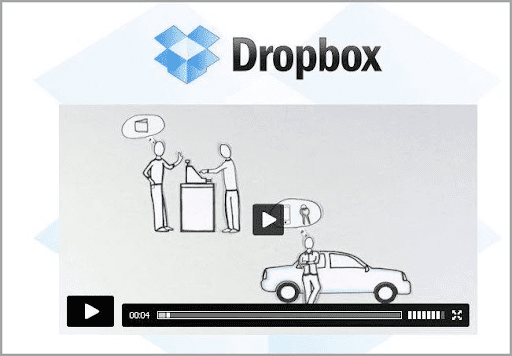
2. Educational videos
Sometimes, a beautiful video isn’t enough to engage leads at the top of the funnel (Awareness stage).
You need to provide some form of education — while entertaining them at the same time.
Identify a specific topic in your niche or pinpoint one challenge people are going through in your niche. Then you can create valuable videos that will truly help people.
An educational video, also known as “how-to” video works because:
- It answers specific questions
- It simplifies complex topics
- It builds trust in your brand
- It persuades viewers to learn more
It can work very well in the awareness and consideration stages of the funnel
A good example of an educational video is from Seattle Coffee Gear: How to Make the Easiest Mocha

This ‘how-to’ video is aimed at consumers who want to learn how to make the perfect Mocha. It pats the audience, building up awareness and rapport, and helping the brand establish likeability and authority.
3. Inspirational Videos
Inspirational videos can come from various sources.
But the most reliable source is user-generated content. Instead of creating videos you think would resonate with your audience, you can ask your audience to record inspiring videos; sharing their experiences with your brand and specific products.
With this approach, you can gain traction from your existing customer base and create an emotional hook that will attract your target audience.
Be creative when compiling your user-generated videos. Be fun but don’t go over the board. Always provide valuable information during those periods of inspiration.
The Boy Who Learned To Fly is a great inspirational video from Gatorade. This video has now generated millions of views and led to insane brand awareness for the company.
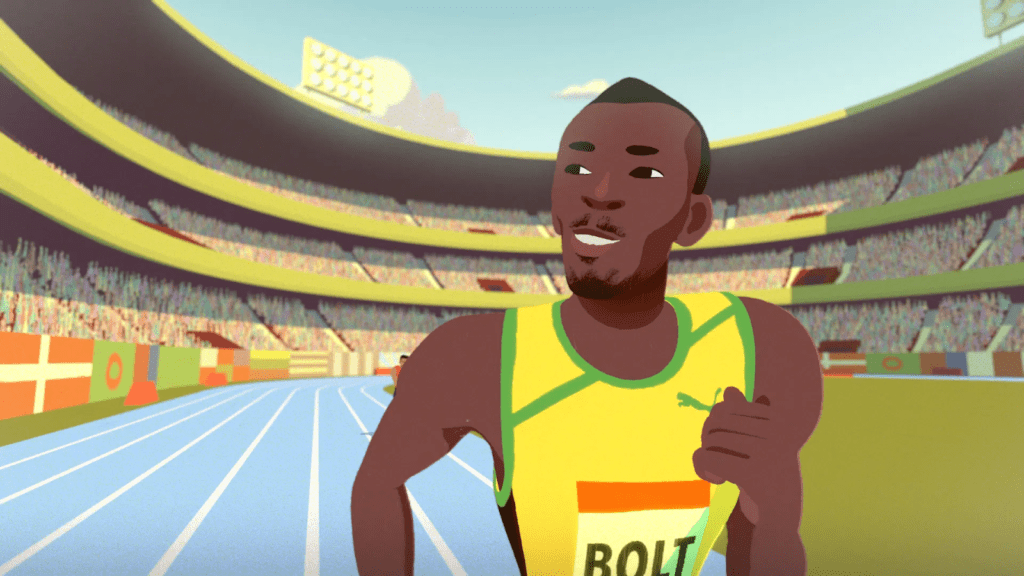
4. Entertaining Videos
Can you help your target audience excitingly learn something new? The entertainment industry is huge (reaching 2.6 trillion by 2023) because the human mind is wired to consume funny, eccentric, actionable, suspense-filled, and horrific content.
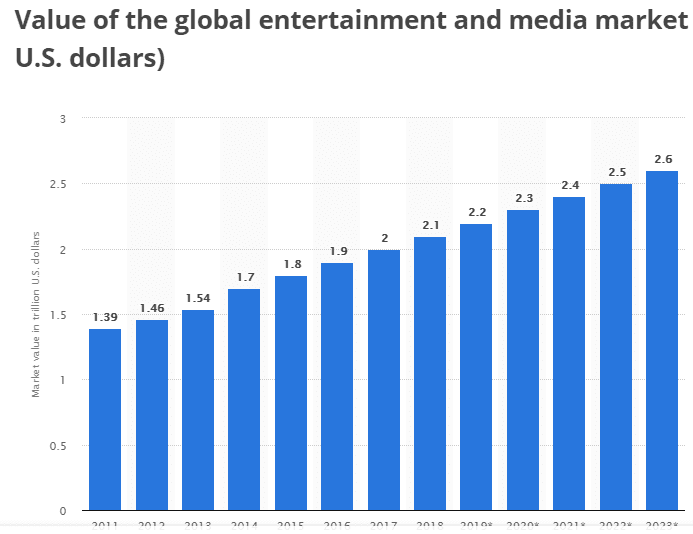
The best entertainment videos are short and punchy. Viewers will fall in love with a good entertaining video before watching it.
Bear in mind, though, to create entertaining videos as a part of your main campaign. It’s all about getting creative with your video — with the objective of attracting an audience that will want to learn more.
A good example is Starbucks’ animated video titled “1st and Main.” This video went viral, generating hundreds of thousands of engagement across the web within a short time. Think of ways to add some creative juice to your video — you’ll appreciate the results.
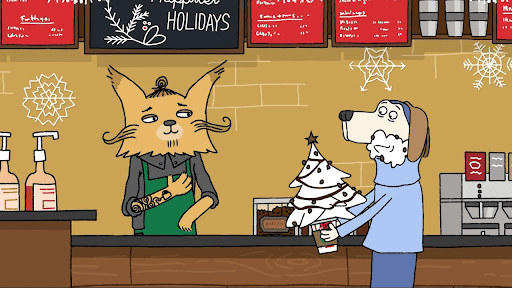
5. Video Documentaries
“Those who tell the stories rule the world.” – Hopi Native American proverb (apocryphal)
There are several forms of producing videos, and documentaries are one of them. We’re not used to video documentaries but it wasn’t a thing for content marketing and digital entrepreneurs.
But these days, you see a lot of brands investing heavily in it.
And there’s a good reason for it, just like ‘how to’ videos, documentaries take the audience on a journey and show something new — but they’re more comprehensive, interesting, and story-driven. They can be a hybrid of brand storytelling and educational video.
Before creating a documentary, make sure you identify a hero and his or her conflict. A good example is Intel’s Documentary, Look Inside: Jack Andraka — it follows the classic hero’s adventure and continuously engaged the viewer from start to finish.

Apart from creating the initial buzz, a video documentary can be so emotional and convincing. That’s why most viewers end up becoming customers and social media followers.
A short documentary film (i.e., video) titled “Sriracha” by Griffin Hammond generated 226,420 trailer plays and Griffin, the producer recorded 6,229 sales, with 61% of the sales coming from the U.S.

6. Repurposed Videos
Content repurposing is all about taking existing content that’s performed well on one channel and repackaging it differently. The goal is to share the same content (in a new format) to attract a new audience.
For example, if you hosted a webinar and got decent attendance, you could repurpose the webinar slides into video content and share it on YouTube, Vimeo, and other video platforms.
If your repurposed video gets a lot of views and engagement, Google can decide to reward you with organic traffic. It happened to AdEspresso.
The company repurposed their blog post into a video and ended up ranking for the same keyword.
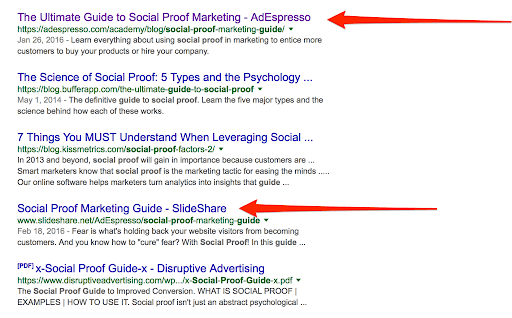
And talking about generating traffic and engaging with leads at the Awareness stage, Eugene Cheng used content repurposing strategy to add 10,000 new subscribers to his email list. How cool?

The objective is to share your values, and ultimately help people take action after watching the video.
If you did a presentation at a live event instead, you can use the slides and voice over them to produce engaging videos.
7. Branded Videos
At the end of the day, you’re still a brand. So don’t hold back your identity. A branded video may not be as helpful as an educational or explainer video, but they can add extra visibility to your brand — especially when you’re just getting started.
As of 2017, views on branded videos increased by 258% on Facebook and 99% on YouTube, based on a study by TubularInsights.
Creating demand for your products and services at the top of the funnel is critical. That should be your ultimate goal, not necessarily getting a lot of leads (although vital). Use your branded video to raise awareness about a cause, an event, or a new product.
Bitrix24 Free Site Builder is a good example. The company, a CRM provider added a site builder tool and decided to launch a video campaign to get the word out. As I write this post, their branded video ad is still running on YouTube.
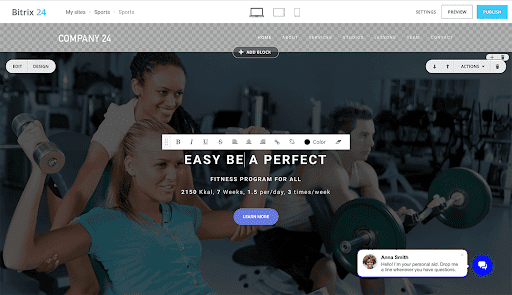
Conclusion
There you have it. Now you know how powerful videos can captivate your target audience and engage them at the top of your marketing funnel.
Remember to create helpful videos always.
And don’t make them too long. Longer videos would work in the consideration stage. But for creating awareness with strangers and generating interest, “2-minute videos” get the most engagement.
Leverage videos to bridge the gap that exists between your brand and potential customers. Prove to prospects that there’s a human face behind the product they’re considering to invest in.
Continue creating helpful videos even after you capture the lead. Engage with videos at every stage in the funnel.
If they were excited about your videos at the awareness stage, imagine how much impact the right types of videos can make at the consideration and decision stages of the marketing funnel.
As always, I’d love to hear from you. Have you used videos to engage with your target audience before? Share your thoughts in the comment box.

